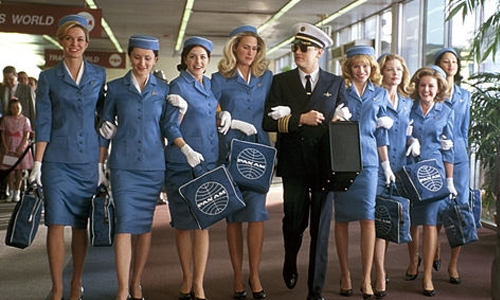America is running out of people to fly its planes
Washington : REPUBLIC AIRWAYS recently filed for bankruptcy, and hardly anyone noticed. That’s because hardly anyone has heard of Republic Airways. But many people unwittingly fly on it all the time. Republic operates flights for Delta Connection, United Express, and American Eagle the big airlines’ affiliates for shorter and less popular routes. As many as half of all Delta-, United- and American-branded flights are actually outsourced to so-called regional airlines like Republic. If you’ve spent any time flying around the United States, you have probably flown with Republic or one of its equally obscure rivals.
The underlying problem behind Republic’s demise could soon affect other, more famous names. The carrier’s boss cited several reasons for the bankruptcy filing, but chief among them was the “grounding aircraft due to a lack of pilot resources”. Republic isn’t alone in struggling to find people to fly its planes. In October, another regional provider, Seaport Airlines, cut most of the routes it flies from its Memphis hub, due to a pilot shortage. SkyWest, which also operates flights for Delta, United and American, reduced its flight capacity last year as its president admitted the airline was “not immune” to pilot shortages.
Those outside the industry might be surprised by this. A common assumption is that piloting aircraft with its high salaries, perks and glamour must be one of the most competitive professions there is. So what is going on? Aerospace types point to regulations enacted by Congress in 2013 that upped the minimum number of hours of cockpit experience a pilot must have in order to fly for a commercial airline, from 250 to 1,500. (Most commercial pilots used to come from the military, but they now come largely from aviation schools, where enrolment has dropped significantly in the past decade and a half.) That much training takes not only time, but also money. And while salaries at the big commercial airlines are competitive, at the regionals new recruits can earn as little as $20,000. Consolidation among the big carriers has given them more negotiating power over their regional partners, making it harder for these smaller operators to raise wages.
A low-salary, high-barrier-to-entry job is hardly an attractive prospect for people thinking about starting a career in aviation and with regionals operating nearly half the country’s flights, some flyers’ working lives begin and end at these lowly carriers. For many young pilots, signing up for a foreign airline can mean a higher salary and lower requirements.
For now, the effects are mostly being felt on routes involving smaller planes and airports. But with the pipeline to the top pilot jobs shrinking, it is likely the major carriers will start to feel the effects. According to one analysis, in the next 20 years the supply of people to fly America's planes will meet just two-thirds of the demand. That could force the big operators to slash routes.
Congress is unlikely to reverse its 1,500-hour requirement, for fear of being accused of prioritising airline profits over passenger safety. But the Regional Airline Association is trying to boost its recruitment efforts by pitching aviation careers to high school and college students. With luck, the wisdom of the markets should prevail: fewer candidates means salaries will eventually have to rise, and more people will enter the field. Until that happens, regional airlines will continue to feel the pinch and travellers who heretofore had never heard of the regionals will, too.
Related Posts

